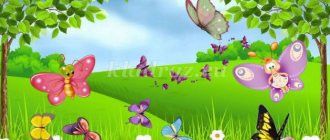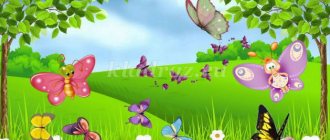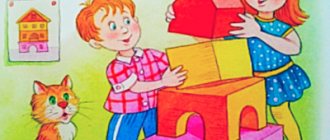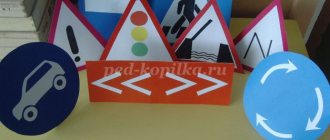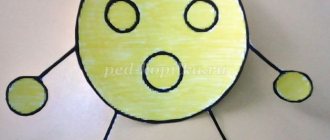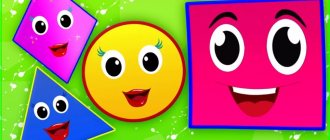GCD summary. “Ordinal and quantitative calculation” (Preparatory group)
Transcript
1 Abstract of the educational activity “Ordinal and quantitative calculation” (Preparatory group) The lesson can be held not in a traditional setting6 in a music room, in a sports room, or on the street. Goal: Consolidate ordinal and quantitative counting within ten. Tasks: -Practise counting objects by touch. -Develop the ability to compare numbers within ten, using mathematical terms “more”, “less”, “equal”. -Practise solving problems involving addition and subtraction within ten. -Develop the ability to navigate in space according to a diagram and on a plane according to the cells. -Practise comparing objects by length, using the words “shortest”, “longer”, “shorter”, “longest” in speech. -Practice in distinguishing geometric shapes by color, shape, size, thickness and classification in accordance with the symbol card. -Develop attention, logical thinking, fine motor skills. -Learn to transform deformed phrases into correct statements. -Develop the ability to expressively tell poems about numbers. Progress of the lesson - A telegram arrived this morning. Guess who it's from. Heals small animals, Heals adults and children, Heals everyone, Heals the Good Doctor. Children. Aibolit.
2 - The telegram arrived not simple, but encrypted. Let's decipher it. Barmaley, animals, kidnap. Children. Barmaley stole the animals. — Rather, Africa, to, come. Children. Come to Africa soon. - Help, animals, save Children. Help save the animals. - Guys, let's help Aibolit Children. Yes. — What can we use to go to Africa? Let's go by train. But what is it? We can't leave, the train has no wheels. Shall we fix the train? Shall we tighten the wheels? Children. Yes. - The wheels will be selected in order from 1 to 10. Children “screw the wheels: they attach plastic bottle caps with numbers from 1 to 10 written on them to the rectangular “cars”. They line up in a column. - Well done, they fixed the train. Who is traveling in which carriage? 1st child. I'm in the first one. 2nd child. I'm in the second one. (Etc.) Teacher. Let's give the signal for departure: "Ooooh." I'm puffing, puffing, puffing, I'm knocking, knocking, knocking, I'm flying, flying, flying, I don't want to be late! Here we are in Africa. Aibolit and Barmaley meet us, greet us and invite us to sit at the tables.
3 Images of Aibolit, Barmaley and animals in cages are on flannelgraph. Aibolit. Barmaley kidnapped the animals and put them in a cage. The animals became sad and sick. -Let's help Aibolit save the animals. But getting to them is not easy; you have to go through a labyrinth. And the entrance to the labyrinth is locked. Let's try to open it. A graphic dictation is conducted. Children work on checkered pieces of paper. Under the dictation of the teacher, move the pencil in the indicated direction. As a result, the sheets should have an image of the key. -With this key we can open the door to the labyrinth. Guys, look at the flannelgraph, how many animals did Barmaley kidnap? (Children's answers.) Where is the ELEPHANT (Children's answers.) Where is the lion? (Children's answers) (Etc.) Now we know who is where. You can go save the animals. Didactic game “Fly” According to the instructions of the teacher, children move the “fly”. -Where are you staying? Whom are we saving? (Children's answers.) There is a lock on the cage. To open it, you need to choose a code to put the desired mathematical sign: “greater than”, “less than”, “equal”. Children “travel” through the cells, compare numbers, put the desired sign between the numbers, “rescue” the animal and place its image at the top of the cell. -So we saved all the animals. Now we need to cure them. But Barmaley took his suitcase with medicines from Aibolit and hid it. We need to find him. Leave the tables and stand in a row. Here's a map with arrows showing where to go and numbers indicating the number of steps. And if we go all the way correctly, we will find the doctor’s suitcase. Children complete the task.
4 - We found the suitcase. But the evil Barmaley mixed all the medicines. We need to take them apart. You need to determine what is hurting the animal and select the right medicine according to the prescription. A didactic game is played with Dyenesha blocks. -There are hoops on the floor, and there is an animal in each hoop. Come and see which part of the body is bandaged. The hoop contains a symbol card. This is a recipe that will help you find the right medicine. Children complete the task. -We cured all the animals. Now they are no longer sad. They invite us to board a plane and look down from the plane at how beautiful Africa is. Physical education lesson Started the engines: rrr! Hands to the side. We're sending the plane into flight. Left wing forward. One, two, three, four, our plane took off. Right wing forward. Perform appropriate movements. -What do you see from above? Children. Palm trees, giraffe, river. “And now the animals want to play hide and seek with us.” Count how many animals there are in total? Remember who is in what place. Now you close your eyes, and one of the animals will hide. The game “Who’s missing?” is being played. “And now the lion wants to ask you riddles.” You will solve them and display the solutions using numbers on the carpet. (The task is performed on the floor.) The monkey brought four bananas to the elephant
5 I made the Giant happy with the gift! He had one banana, Look, Now how much is there in total, Tell me! Children. There are five bananas: one plus four. Teacher. On the swing, on the swing Five spotted leopards sat down at the zoo, Smiling at the sun And swinging merrily with the good old lion. How many animals are there in total? Children. Six animals. Teacher. Seven monkeys, seven neighbors, ran away from their branches, all of them hung upside down on their tails, swayed, shouted, and fought among themselves. The most important bully got the most in the fight. They threw her off the branch. How long will it be without her? Children. Six monkeys. -Guys, look what beautiful caterpillars have crawled to us. How are they similar? Children. They are made from “kinder surprises”. -What is the difference? Children. Color and length. -The caterpillars also want to play with you. Take one caterpillar at a time and hide it behind your back. Count by touch how many balls your caterpillar has. How many balls you count, that’s how old she is. Now tell us about your caterpillar: what color it is and how old it is. Children complete the task. -Now let’s release the caterpillars into the clearing. Children place caterpillars on a green piece of paper.
6 -Put them in order: from shortest to longest. Name their length. Children complete the task (“The shortest, the longest, even longer.”). - Now say it in reverse order. Children complete the task (“The longest, shorter, even shorter, shortest”). - That's how fun we played! But now it's time for us to return to kindergarten. Let's dance with our animals. Children dance to the song “Africa” from the movie “Little Red Riding Hood.” - Barmaley wants to tell you that he really liked the way you played together. He promises that he will no longer offend animals, but will be friends with them. Let's say goodbye to Barmaley, Doctor Aibolit and the animals. Let's get on the train and go to kindergarten. Goodbye friends!
